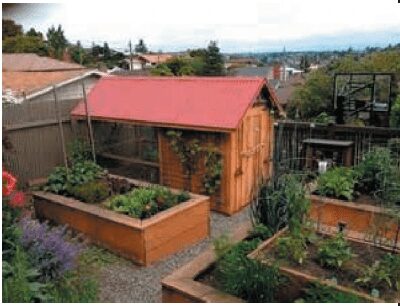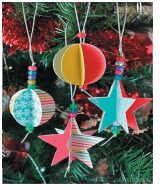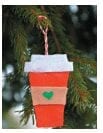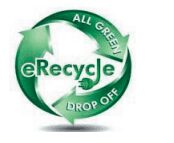1. City of Tucson City Council Approves New Urban Agriculture Guidelines. The Mayor and Tucson City Council last night unanimously approved an urban agriculture text amendment to the City’s Unified Development Code.

It reduces barriers to raising backyard chickens and growing vegetable gardens, and it clarifies rules for community gardens and farmers markets. The amendment sets maximums on the number of animals allowed, based on lot size, and prohibits male fowl. The newly-a dopted rules will come back for reconsideration after two years. The City has been working with the community to develop a proposal which would, among other things, allow people to grow their own food and raise foodproducing animals, such as chickens, miniature goats, ducks, geese, and turkeys. The proposal evolved from Plan Tucson, the Sustainable Code Project, committee meetings, and four public meetings held last year. From the Arizona Daily Star: http://bit.ly/1Nc9LTY

2. What Happened At Christmas of 1914? It was World War I. Allies and Axis troops all put down their guns in order to exchange gifts and sing carols. They even played a little soccer with their enemies to pass the time. One English soldier even wrote of the day “I wouldn’t have missed the experience of yesterday for the most gorgeous Christmas dinner in England.”
3. Give To Charities For A Win-Win Situation. Tis the time of year to give to legitimate charities so you can take off your contribution from your taxes. Globally, think of giving to Heifer, International. Go to Heifer.com and contribute to the puchase of chickens, goats, cows, buffalo’s etc. A gift that keeps on giving. Locally, consider giving to EnviroInsight.org, a local Arizona non-profit. Type into your browser, EnviroInsight.org. Click on Donate. Take your gift off your taxes.
4. Kathy Jacobs: Our Water Laws Inadequate For Hotter, Drier World. Water is our society’s most precious resource, and our laws and policies should reflect this. Across the West, a legacy of groundwater overpumping, compounded by prolonged drought and climate change, has put our water supplies at risk. In Arizona, proactive water management is more important than ever. Planning ahead to achieve sustainable, climate-resilient communities and landscapes requires that our legal framework line up with reality and reflect the best available science.
Arizona has already been experiencing serious drought for more than a decade. Scientists predict a hotter and drier climate across the Southwest, with decreasing snowpack and increased chances of long-term drought.
If our water policies do not keep pace with these changes, many of the West’s cities will face tough choices West’s cities will face tough choices and many of its ecosystems may fail.
The connection between surface and groundwater is not properly recognized by current laws, putting our streams and rivers at risk. Groundwater pumping often reduces river flows. This is of particular concern ows. This is of particular concern with small domestic wells close to rivers and streams, but dewatering of rivers also results from regional pumping.
Active Management Areas (AMAs), where most of Arizona’s population lives, have been successful in Active Management Areas (AMAs), where most of Arizona’s population lives, have been successful in encouraging the use of renewable water supplies instead of pumped groundwater. However, rural parts of . However, rural parts of the state also need focused, proactive water management. The current system leaves many rural areas the state also need focused, proactive water management. The current system leaves many rural areas vulnerable; they also need a more sustainable future for people and wildlife.
The Arizona Department of Water Resources is responsible for water management in Arizona; it is sadly The Arizona Department of Water Resources is responsible for water management in Arizona; it is sadly underfunded in light of the challenges. A decade ago, 60 staff ran five regional offices and coordinated underfunded in light of the challenges. A decade ago, 60 staff ran five regional offices and coordinated water policy. Now that’s down to 10. Their capacity to do proactive planning to support Arizona’s citizens water policy. Now that’s down to 10. Their capacity to do proactive planning to support Arizona’s citizens is extremely limited.
Though an “adequate” water supply” must be proven for new large subdivisions outside of AMAs, the rules allow the groundwater table to be lowered to 1,200 feet over 100 years. This could have substantial impacts on rivers and riparian vegetation, in addition to leading to damaged infrastructure (roads, buildings) due to land-surface cracking.
Water laws do not limit the effects of major new developments on surface flows and watersheds. This exposes water users and water-dependent wildlife habitats to enormous risks. In the San Simon Valley and Willcox area — where agriculture is expanding — wells have run dry. In another case in point, development of the Villages at Vigneto, a mega-development in the San Pedro River watershed, is likely to lead to long-term consequences for people as well as the globally significant San Pedro River and migratory bird corridor.
The U.S. Geological Survey has been asked to create a detailed hydrogeologic model of the complex Middle San Pedro River system. In theory, this model would enable informed land- and water-management decisions. It is crucial to fund and complete this study so that communities and decision makers can understand the consequences of Villages at Vigneto and other development in the area. We know what overpumping groundwater looks like — the Santa Cruz River used to flow through downtown Tucson. We cannot afford to lose the few remaining riparian areas in the state — they are critical to our wildlife, recreation and economy. Source: Arizona Daily Star


5. Make Ornaments For Your Tree. Engraved and Illuminated Would you believe these started out as ordinary red and green balls? A Dremel tool helps you etch whatever design you want onto the surface, and string lights make the group shine bright

Paper Stars
Give your paper ornaments some 3-D life.
A Hot Cup of Joe Some simple sewing and colored felt remind us just how much heart coffee (or hot chocolate) on cold winter’s day.


Pine Cone Bows This one couldn’t be easier.

Confetti Dipped Give the dip-dye trend an update for your ornaments by just covering half of a pastel ball.

Peanut Snowmen
Snowmen, crafted from peanuts, can be given all sorts of colorful hats and scarves. Use different sizes to create kid and adult versions.

Gingerbread Men Cinnamon salt dough makes for a strong, sturdy gingerbread man. Dress him with a checkered scarf (in case he gets cold).

Let It Snow Don’t worry — these snowballs won’t melt. Use a permanent marker to write a festive message on the front side.
a. 1.76 billion, b. 76 years, c. Peace and Joy, d.33.000.000, e. 7 yrs, f..9,500,000 g. 17th Century, h. NY City i. Germany, j. 1830’s
6. Recycle Your Electronic Devices. If you choose to retire your electron devices this holiday season in favor of new devices, don’t toss the devices into the trash – recycle them. Don’t know where to recycle your old phone, tablet or television? What electronics can you recycle? Check out Earth911.com for help.
Desktop Computers
Tablet PCs
Laptops
Projectors
Laptop Batteries
Printers
Monitors
Hard Drives
Smartphones
Copiers
Networking Equipment
Cables
Computer Accessories
And more


Coffee with the Board. De3cember 17, 2015 at 8:00 a.m. at Cartel Coffee – 225 W University Dr., Tempe AZ 85281
Want to be better connected in sustainability circles? Want to find out what’s going on behind the scenes at The Green Chamber? Here’s your chance!
Let’s keep the monthly topic going! This month we are focusing on Green Successes: 2015 in Review!
Share a cup of joe with members of The Green Chamber’s Board of Directors and get connected.
Getting involved in the Green Chamber: Greater Phoenix is as easy as 1-2-3! Each month we bring you 3 great, green events – Mark your calendar for the following dates:
1st Tuesday – Green Drinks
2nd Wednesday – Lunch & Learn
3rd Thursday – Coffee with the Board
8. Gila diversion pact signed in D.C. Written by Benjamin Fisher on November 24, 2015 The U.S. Department of the Interior announced Monday afternoon that Secretary Sally Jewell signed the New Mexico Unit Agreement with the New Mexico Unit of the Central Arizona Project Entity, late in the day on the deadline date set forth by the Arizona Water Settlements Act. The executed agreement opens the door for a series of environmental reviews of a potential diversion of the Gila River.
In a release, Principal Deputy Assistant Secretary of the Interior for Water and Science Jennifer Gimbel stressed that signing the agreement does not ensure a diversion, but greenlights the upcoming National Environmental Policy Act, Endangered Species Act and Historic Preservation Act review processes. These must be successfully completed before any final project could be approved. Those processes will not begin until the N.M. CAP Entity develops a 30 percent design of a proposed project.
Read more at http://www.scdailypress.com/site/2015/11/24/gila-diversion-pact-signed-in-d-c/
9. Creating LEDs From Food And Beverage Waste. Univ. of Utah Most Christmas lights, DVD players, televisions and flashlights have one thing in common: they’re made with light-emitting diodes (LEDs). LEDs are widely used for a variety of applications and have been a popular, more efficient alternative to fluorescent and incandescent bulbs for the past few decades. Two Univ. of Utah researchers have now found a way to create LEDs from food and beverage waste. In addition to utilizing food and beverage waste that would otherwise decompose and be of no use, this development can also reduce potentially harmful waste from LEDs generally made from toxic elements.
LEDs are a type of device that can efficiently convert electricity to light. Unlike fluorescent and incandescent bulbs, which direct 80% of the energy consumed to producing heat, LEDs direct 80% of the energy consumed to producing light. This is made possible by the fact that LEDs do not require a filament to be heated as incandescent and fluorescent bulbs do.
LEDs can be produced by quantum dots, or tiny crystals that have luminescent properties. Quantum dots (QDs) can be made with numerous materials, some of which are rare and expensive to synthesize, and even potentially harmful to dispose of. Some research over the past 10 years has focused on using carbon dots (CDs), or simply QDs made of carbon, to create LEDs instead.
Compared to other types of quantum dots, CDs have lower toxicity and better biocompatibility, meaning they can be used in a broader variety of applications.
Utah Metallurgical Engineering Research Asst. Prof. Prashant Sarswat and Prof.Michael Free, over the past year and a half, have successfully turned food waste such as discarded pieces of tortilla into CDs, and subsequently, LEDs.
The results were recently published in Physical Chemistry Chemical Physics.From bread to bulb To synthesize waste into CDs, Sarswat and Free employed a solvothermal synthesis, or one in which the waste was placed into a solvent under pressure and high temperature until CDs were formed. In this experiment, the researchers used soft drinks and pieces of bread and tortilla.The food and beverage waste were each placed in a solvent and heated both directly and indirectly for anywhere from 30 to 90 mins.
For comparison, a human hair is around 75,000 nm in diameter. For example, sucrose and D-fructose dissolved in soft drinks were found to be the most effective sources for production of CDs. Finally, the CDs were suspended in epoxy resins, heated and hardened to solidify the CDs for practical use in LEDs. An environmentally sustainable alternative
Currently, one of the most common sources of QDs is cadmium selenide, a compound comprised of a two toxic elements. The ability to create QDs in the form of CDs from food and beverage waste would eliminate the need for concern over toxic waste, as the food and beverages themselves are not toxic.
“With food and beverage waste that are already there, our starting material is much less expensive. In fact, it’s essentially free,” said Sarswat. According to a report from the U.S. Dept. of Agriculture, roughly 31% of food produced in 2014 was not available for human consumption. To be able to use this waste for creating LEDs which are widely used in a number of technologies would be an environmentally sustainable approach. Source: University of Utah


